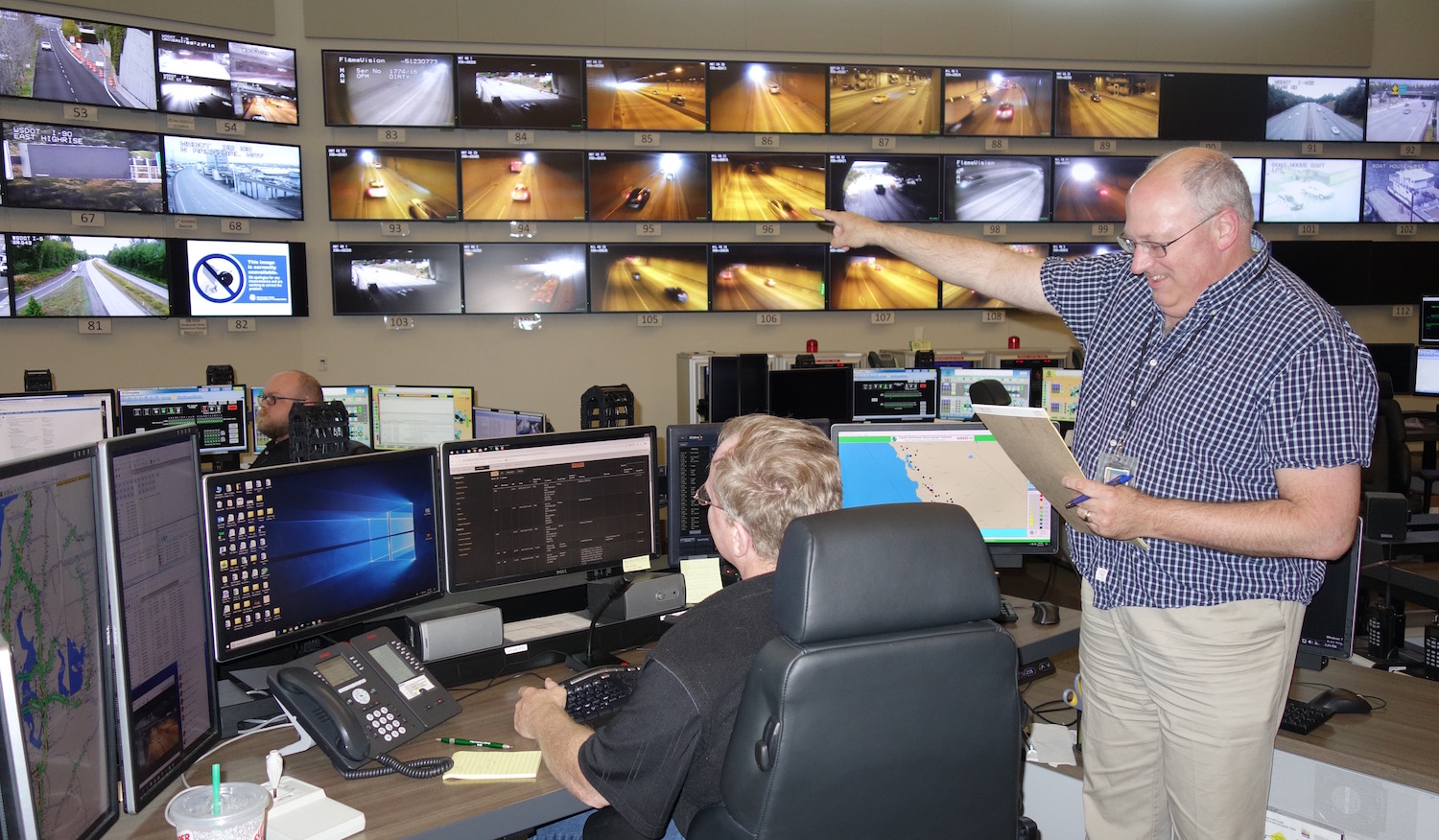After years working as a video editor at one of the local news stations in the Pacific Northwest, Chad Ross was laid off. This was, in part, because the big corporation behind the news outlet was very anti-union and felt they could bring in cheaper non-union labor.
Ross had been a member of the International Alliance of Theatrical Stage Employees (IATSE) and knew the value of having a union to back him up. While he was upset about the mistreatment at his former job, upon reflection, he’s been really happy with the new direction his career has taken.
In May 2014, Ross was hired as a Traffic Safety Systems Operator – which merged into the Transportation Technician classification a few years ago – in the Northwest Region Tranportation Management Center (TMC) at the Washington State Department of Transportation (WSDOT). His years of video editing skills were a natural fit for the TMC where cameras and data are monitored to keep roads in the I-5 corridor moving.
About three years ago, the TMC moved into its new facility with dozens more computer monitors and screens and the state-of-the-art equipment necessary to keep track of the growing number of cars on the road. This includes things like sensors on the highway that monitor occupancy and volume, and a computerized system that switches directions for the express lanes — an operation that used to take more than twice as long when done manually. At the TMC, WSDOT has also harnessed the power of social media to keep people informed of road work, traffic and accidents througout the day.
When asked about a typical day, Ross said it’s hard to describe – that’s because everyday is different.
“This work is never boring,” he said. “It’s fun coming in every day not knowing what’s going to happen, but being prepared for anything to happen.”
While the TMC is always bustling, it reaches its busy peak during the morning commute hours between 6:45 and 9:15 a.m. During their shifts, Ross and his fellow PROTEC17 colleagues – who staff the TMC around the clock – respond to emergency calls and connect to the Washington State Patrol and other incident response teams, as necessary. They control the opening and direction change of the express lanes. From the cameras, they also assess road maintanence needs, like potholes and guardrail replacement, and broadcast roadwork information to the system which connects to phone mapping applications that people use everyday.
Right now, Ross is training to be a Transportation Tech III – a job pathway that allows members to learn new skills and advance their careers. Also, in the new 2019-21 PROTEC17 contract with the State of Washington that goes into effect on July 1, 2019, all Tranportation Techs will be receiving additional assignment pay due to their increased job responsibilites, which have changed tremendously in the last few years. Ross is really grateful for his union contract.
“With a union, you’re stronger and have more power and influence over how things are done than you would as an individual worker,” said Ross.
Another exciting opportunity in the TMC is a new PROTEC17-represented position created to monitor the new State Route (SR) 99 tunnel that will cut under Seattle, replacing the viaduct starting in February 2019. WSDOT members are really excited about this highly anticipated feat of transportation engineering.
But despite all of the cool tools and engineering marvels that surround members at the TMC, Ross can easily say what he likes best about his job.
“One of the best things about working at WSDOT is the people,” he said. “There are so many different backgrounds, cultures, experiences and ages represented here. I really enjoy getting to know everyone.”


